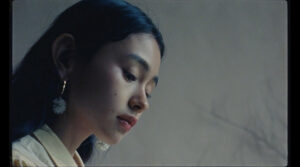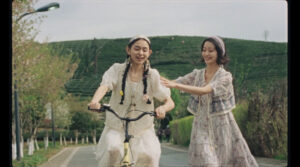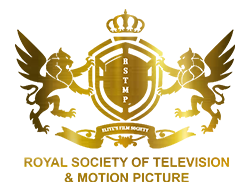
Daydream on Monday I Interview |

RSTMPA: Could you elaborate on the role of daydreaming and self-discovery in “Daydreaming on Mondays”? How do these themes contribute to the overall narrative and the protagonist’s journey?
Frederic Chen: The film is divided into three chapters, each depicting the psychological journey of an anxious girl from seeking acceptance by others to rediscovering self-confidence. The opening scenes use impressionistic cinematography to immerse the audience in the rhythm of the story, allowing them to delve into the subjective world of the protagonist. The concrete and detailed visuals enrich the aesthetic beauty of the frames while also supporting the progression of the story.
 RSTMPA: The use of freehand technique and its impact on immersing viewers in the subjective world of the protagonist. Could you explain how this technique enhances the audience’s connection with the character and the film’s emotional resonance?
RSTMPA: The use of freehand technique and its impact on immersing viewers in the subjective world of the protagonist. Could you explain how this technique enhances the audience’s connection with the character and the film’s emotional resonance?
Frederic Chen: Firstly, the camera movements, especially handheld shots, provide the audience with a sense of breathing and an immersive experience of the protagonist’s inner changes. Secondly, this approach allows for capturing diverse performances of the actors. Finally, the texture of the film greatly enhances the overall visual quality.

RSTMPA: The film’s aesthetics and art direction have been praised for their brilliance and visual beauty. Could you provide specific examples of how the costume and art direction contribute to the overall atmosphere and storytelling in “Daydreaming on Mondays”?
Frederic Chen: The film was shot in a villa in Hangzhou, China, with antique furniture and decor, which elevates the visual quality of the film. The deep layers of the garden create a spacious and open atmosphere. The art direction skillfully handles small props, and I particularly love the details in the notebook held by the female lead, where I can see the delicate expressions of her thoughts.

RSTMPA: The story highlights the balance between dialogue and imagery in the film, with poetic language adding a soft, human touch. How does this balance between verbal and visual elements contribute to the audience’s experience and understanding of the film’s themes and messages?
Frederic Chen: In the early stages, we focused on the girl’s self-characteristics and her self-talk, emphasizing the use of empty shots, lighting, and coherent cinematography to convey the story.

RSTMPA: The short film explores the contrasting themes of adulthood and carefree freedom, transcending age restrictions. Can you discuss how these themes are portrayed in the film and how they add depth and complexity to the overall narrative?
Frederic Chen: The film aims to encourage people to go out, embrace the things around them, and reconnect with nature. Starting from the simplest act of making friends, the female lead stepping from home into nature signifies her inner activities. The use of montage helps to portray this journey effectively.


